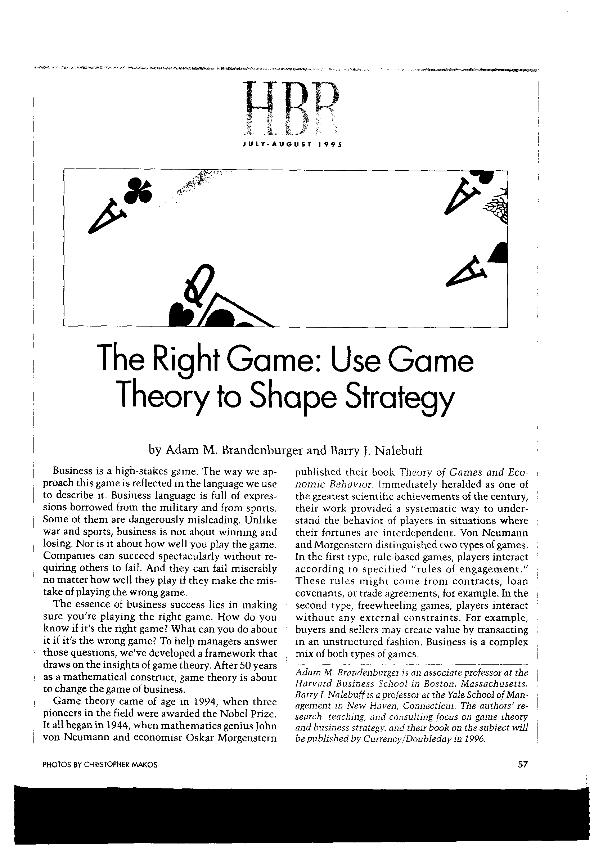The Right game : use game theory to shape strategy

Contenido multimedia no disponible por derechos de autor o por acceso restringido. Contacte con la institución para más información.
| Tag | 1 | 2 | Value |
|---|---|---|---|
| LDR | 00000nab a2200000 i 4500 | ||
| 001 | MAP20071023914 | ||
| 003 | MAP | ||
| 005 | 20080418120934.0 | ||
| 007 | hzruuu---uuuu | ||
| 008 | 960117e19950701esp|||| | |00010|spa d | ||
| 040 | $aMAP$bspa | ||
| 084 | $a922.111 | ||
| 100 | 1 | $0MAPA20080297626$aBrandenburger, Adam M. | |
| 245 | 1 | 4 | $aThe Right game$b: use game theory to shape strategy$cby Adam M. Brandenburger and Barry J. Nalebuff |
| 520 | $aManagers can profit by using these insights from game theory to design a game that is right for their companies. The rewards that can come from changing a game may be far greater than those from maintaining the status quo. For example, Nintendo succeeded brilliantly in changing the video game business by taking control of software. Sega's subsequent success required changing the game again. Rupert Murdoch's New York Post changed the tabloid game by finding a convincing way to demonstrate the cost of a price war without actually launching one. Successful business strategy is about actively shaping the game you play, not just playing the game you find. The authors explore how these examples and others worked in practice, starting, with the story of how General Motors changed the game of selling cars | ||
| 650 | 1 | 1 | $0MAPA20080606091$aEstrategia empresarial |
| 650 | 1 | 1 | $0MAPA20080578442$aTeoría de juegos |
| 650 | 1 | 1 | $0MAPA20080571566$aCasos prácticos |
| 700 | 1 | $0MAPA20080227227$aNalebuff, Barry J. | |
| 740 | 0 | $aHarvard business review | |
| 773 | 0 | $wMAP20077100345$tHarvard business review$dBoston$gnº 4, July-August 1995 ; p. 57-71 |

